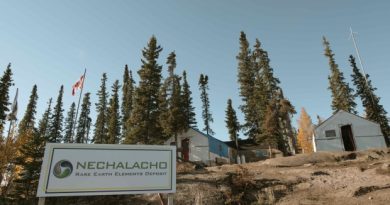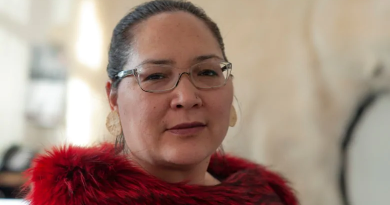Captain ignored co-pilot’s warnings before plane crash in Canadian Arctic
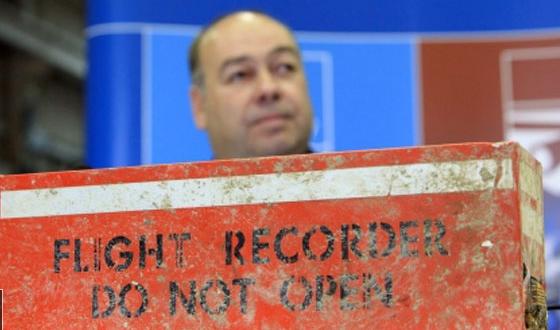
A desperate co-pilot pleaded with his captain to abort the landing in the final minutes before their Boeing 737 slammed into a hillside in the High Arctic two years ago, killing 12 of the 15 people aboard, according to the final report into Canada’s deadliest airplane crash in 15 years.
But the first officer’s objections weren’t assertive enough and went unheeded until it was too late.
Canada’s Transportation Safety Board said Tuesday that First Air Flight 6560 was doomed by a variety of factors, including a scrambling cockpit crew that started their descent late into the Resolute airport in Nunavut and a captain who might have accidentally hit his steering yoke and inadvertently changed the mode on the autopilot.
Investigators expressed concerns as well with the Ottawa-based airline, saying among other things that it needs to provide better guidelines to its crews for when a first officer can take control from a pilot.
The report also flags Canada’s outdated standards for training flight crews in how to best communicate and collaborate with each other.
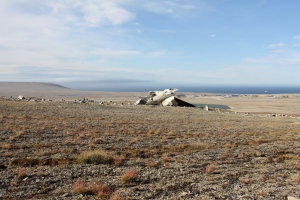
The crash, on Aug. 20, 2011, killed eight passengers and four crew en route from Yellowknife to Resolute, an Arctic hamlet of 250 people that is one of the northernmost towns in the world. Three passengers survived when the plane struck a hill two kilometres east of the airport, broke apart and burst into flames.
The report released Tuesday suggests the flight’s cockpit crew spent their final moments struggling to cope with misaligned navigational sensors as the 737 made its final approach amid drizzle and heavy fog. The sensors were displaying a bearing that was 17 degrees off from the plane’s actual heading. Signals from GPS and the airport runway’s landing beacon were giving correct information.
Capt. Blair Rutherford was so busy trying to reconcile the conflicting readings that he “likely did not have a high-level overview of the situation. This… compromised his ability to identify and manage risk,” the investigation found.
First Officer David Hare was scrambling as well, and was too preoccupied and rushed to come up with a way to persuade Rutherford to abort the landing, the report says.
“There was a number of exchanges between the two pilots in a span of a minute and 20 seconds or so, but part and parcel to that exchange was there was no concrete suggestion or direction from the co-pilot about a go-around,” Brian MacDonald, the lead investigator into the crash, said at a news conference Tuesday.
‘I don’t like this,’ 1st officer says
Transportation Safety Board Video- Animation of flight’s final moments
Recordings from those final moments, recovered in one of the plane’s two black boxes, depict an increasingly fraught first officer.
Over a 20-second span, 2½ minutes before the 737 plowed into the hillside, Hare made five statements about the aircraft’s position being askance.
Rutherford replied that he thought the autopilot was properly navigating the plane toward the airport — but the investigation found that he had likely accidentally tapped on his steering yoke, changing the programmed destination.
Hare then said that GPS and the landing beacon sent out from the runway both showed their approach angle to be off. One minute and 20 seconds before the crash, he recommended aborting the landing, after reminding the captain about the hill to the right of the runway.
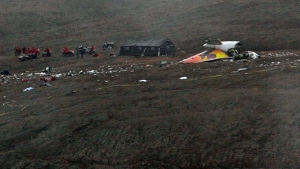
Rutherford responded that he would continue with the landing as planned.
With a minute to go, Hare again made several comments about taking corrective action.
Finally, six seconds before the crash, Hare called Rutherford by his first name. “I don’t like this,” he said.
A second later, the aircraft’s crash-warning system went off and Hare again called for Rutherford to abort the landing, pull up and initiate a go-around.
Less than a second before impact, Rutherford started the abort procedure.
“It was completely sudden and violent,” Nicole Williamson, one of the three survivors, said of the crash in an interview with CBC News the month after it happened. “Just came out of nowhere.”
Recommendations
Two and half years later, federal investigators have determined an array of issues. Twice in the months before the accident in Resolute, First Air flights had problems with misaligned navigational sensors — once on the plane that later crashed, and once on a different plane but with the same pilot.
In both cases, the flight crews didn’t report the situations to the airline’s safety managers (it was only explicitly required for the first incident because the pilots aborted the landing).
The Transportation Safety Board report says the lack of reporting constituted “missed opportunities” to learn from the glitches and to spot “potential safety issues.” It indicates the airline’s safety procedures “were not fully effective.”
First Air is also cited for not providing enough time, or covering all the required material, in a training session for flight crews on methods to best communicate and collaborate in the cockpit — procedures that the industry
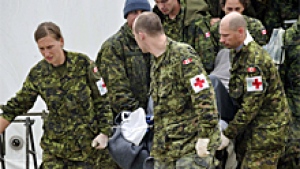
calls “crew resource management,” or CRM. Proper CRM could have reassured the first officer of his right to take control of the doomed 737 sooner.
“The first officer made many attempts to communicate his concerns and suggest a go-around…. The suggestion was not sufficiently assertive at a time when an escalation of communication was needed, and did not convince the captain to discontinue the approach,” the investigation found.
“In the absence of clear policies or procedures allowing a first officer to take control, this first officer likely felt inhibited from doing so.”
The federal government comes under criticism, too, for not updating its standards for training pilots in those kinds of interactions. The report points out that there is not even any accreditation in Canada for the instructors who do the training.
“This increases the risk that flight crews will not receive effective… training,” the findings read.
Read complete TSB report here.
– By Zach Dubinsky, CBC News
Related Links:
The Victims of Resolute Bay crash in Canada’s High Arctic, CBC News
Plane crash outside Resolute Bay rocks Arctic community, Blog by Mia Bennett

